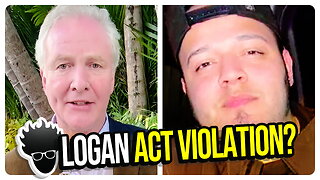Premium Only Content

Eclipse Background
The Moon moves right to left in its orbit around the Earth. The shadow it casts hits the Earth during the August 21, 2017 total solar eclipse. Eclipses, whether solar or lunar, occur because of the periodic alignments of the sun, Earth, and moon. These three bodies, orbit in space in very predictable paths (yes, the sun orbits too. It orbits the galaxy once every 200 million years!). Ever since the days of Kepler and Newton, we have been able to predict the motion of planetary bodies with great precision. So, why do eclipses happen?
Solar eclipses happen when the moon moves between Earth and the sun. You might think that this should happen every month since the moon’s orbit, depending on how it is defined is between about 27 and 29 days long. But our moon’s orbit is tilted with respect to Earth’s orbit around the sun by about five degrees. Not much, you say? Yes, but the moon, itself, is only about ½ degree in width in the sky, about ½ the width of your pinky finger held at arm’s length. So, sometimes the moon misses too high and sometimes too low to cause a solar eclipse. Only when the sun, moon, and Earth line up close to the “line of nodes”, the imaginary line that represents the intersection of the orbital planes of the moon and Earth, can you have an eclipse.
This is true for both solar and lunar eclipses. This situation is somewhat unique as no other moon in the solar system orbits roughly in the plane of the “ecliptic”, Earth’s orbital plane, that the planets more or less follow. This video is public domain and along with other supporting visualizations can be downloaded from the Scientific Visualization Studio at: http://svs.gsfc.nasa.gov/13425
-
 14:49
14:49
BEK TV
22 hours agoEP 7 - DUNSEITH DECLASSIFIED: ALLEGED ATTEMPTED MURDER VICTIM ADDRESSES “LOVE TRIANGLE” RUMOR
5.53K1 -
 LIVE
LIVE
LIVE WITH CHRIS'WORLD
2 hours agoLIVE WITH CHRIS'WORLD - AGAIN ON A THURSDAY?! LETS GO!
122 watching -
 LIVE
LIVE
VOPUSARADIO
3 days agoPOLITI-SHOCK! "Exposing Election Theft & Money Laundering"
42 watching -
 LIVE
LIVE
Badlands Media
18 hours agoQuite Frankly Ep. 3: The Gilded Age, Cabbage Patch Kids, Sleep Walking, More ft. Cultivate Elevate 4/17/25
1,115 watching -
 54:41
54:41
LFA TV
9 hours agoKilmar Abrego Garcia: Democrat Poster Child and MS-13 Terrorist | TRUMPET DAILY 4.17.25 7PM
15.1K3 -
 LIVE
LIVE
Mally_Mouse
5 hours agoLet's Hang!! - New Goals + Dressin Up!
134 watching -
 1:34:16
1:34:16
Kim Iversen
1 day agoFmr Intel Operative EXPOSES UFO Program and Why America Is Falling
59.7K37 -
 2:08:18
2:08:18
Redacted News
5 hours agoBOMBSHELL! TRUMP SHUTDOWN ISRAEL'S PLANS FOR WAR WITH IRAN, TRUMP SLAMS FED JEROME POWELL | REDACTED
140K84 -
 1:13:52
1:13:52
Dr. Drew
6 hours agoThe RFK Files Coverup & Failed State Of California w/ Mark Groubert & Chris Moritz – Ask Dr. Drew
48K6 -
 1:15:43
1:15:43
vivafrei
5 hours agoCanada Debate RECAP! Logan Act Violation? FSU Shooting! Real ID or Big Brother Surveillance? & MORE!
80.7K46